Emit #2 – On Air Quality Sensors
This is Emit #2, in a series of blog-posts around the Smart Emission Platform , an Open Source software component framework that facilitates the acquisition, processing and (OGC web-API) unlocking of spatiotemporal sensor-data, mainly for Air Quality. In Emit #1 , the big picture of the platform was sketched. Subsequent Emits will detail technical aspects of the SE Platform. “Follow the data” will be the main trail loosely adhered to.
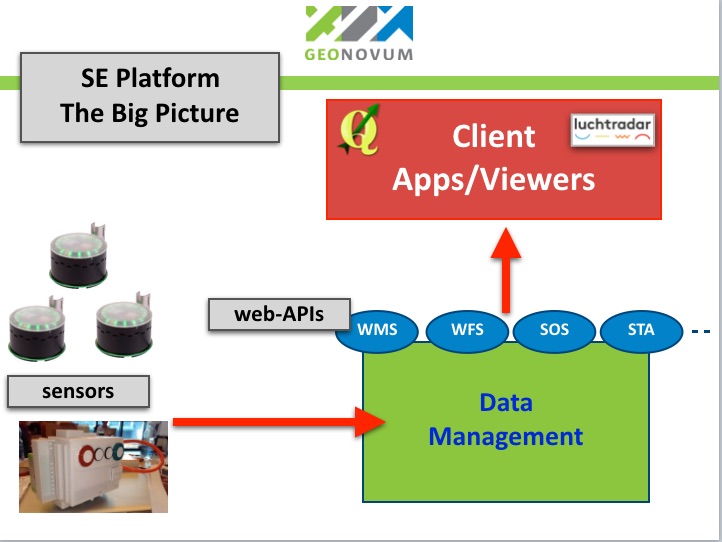
In this Emit I will talk a bit about sensors as the data flow originates there. Mind, this is not my area of expertise, but much of the SE platform, in particular data processing (ETL), is built around challenges of dealing with (cheap) sensors for Air Quality.
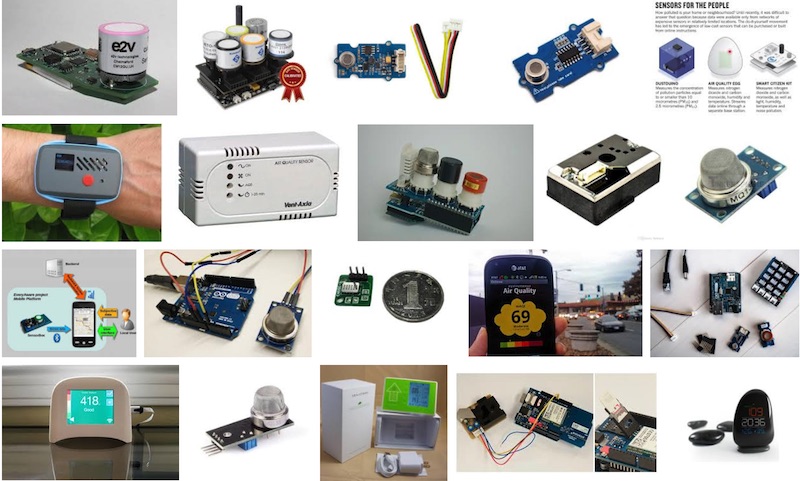
Previously I posted about meteo sensors and weather stations (part 1 , part 2 , part 3 ): how to connect a weather station to a Raspberry Pi and publish weather data “to the cloud”. Now this was relatively easy, due to the availability of:
- affordable hardware, like meteo sensors and Personal Weather Stations
- Open Source software to collect, store and visualize data like weewx
- community cloud services like Weather Underground and Met Office WOW to publish your data
So without any programming, you can be “in business” quite quickly with your personal weather station. In addition: meteo sensors (temperature, humidity, pressure, wind, rain) in general produce relatively “clean/interpretable data”. From a cheap sensor like the $9,95 DH22 Temperature Humidity Sensor , it is relatively straightforward to read-out temperature and humidity via an Arduino Board or Raspberry Pi. Personal Weather Stations provide even more internal software, so most meteo data comes out in well-known units (Fahrenheit/Celsius, HectoPascal, etc).
Now this is a whole different story for (cheap) Air Quality sensors. It begins with the fact that measuring Air Quality indicators like Carbon Monoxide/Dioxide (CO, CO2), Nitrogen Monoxide/Dioxide (NO, NO2), Particulate Matter (PM, i.e. fine dust), Ozone (O3) requires many ways …, with both simple chemical and physical methods and with more sophisticated electronic techniques (from www.enviropedia.org.uk ). While techniques for measuring weather data have evolved for maybe hundreds of years, measuring Air Quality is relatively new and mostly within the domain of “chemistry”, and when it comes to sensors, very expensive.
Recently, this has changed. Not only are governmental environmental agencies facing lowering budgets, but more importantly, a growing number of civilian initiatives want to “take things in their own hand” with respect to measuring Air Quality. As a result more and more affordable/cheap sensors and creative solutions like the iSpex (measure PM on your iPhone) are entering the market. But given the (chemical) complexity, how reliable are these sensors ? Is the data that they produce readily usable? Like with Celsius to Fahrenheit, is it a matter of providing some simple formula?
IMHO unfortunately not, but things are getting better as time passes. It also depends on the chemical component you want to measure. For example, Nitrogen Dioxide (NO2) and Ozone (O3) appear to be much harder to measure than CO/CO2. Particulate Matter is a whole story by itself as one deals with, well, “dust” in many shapes and especially sizes (PM10, PM2.5, PM1).
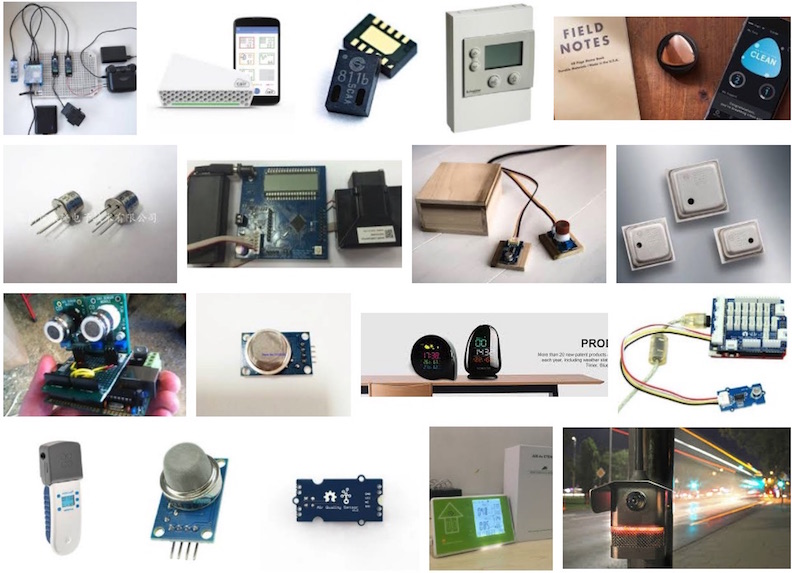
There is ample research for the quest of finding cheap AQ sensors: their limitations, reliabilities, particularities. Within the Smart Emission Project, I am working with RIVM, the Dutch National Institute for Public Health and the Environment and the European Union Joint Research Centre (JRC), who both did extensive research on cheap AQ sensors. I know there is much more, but forgot to mention that the main message of this Emit is that “measuring AQ has far more challenges than measuring weather data”. One of the main conclusions, again IMHO, is that, yes, it is possible (to use cheap AQ sensors), but one has to do Calibration. Below some links if you are interested in the state of RIVM and EU JRC research:
- RIVM – Luchtkwaliteit meten met sensoren (Measuring AQ with Sensors), J. Wesseling et al, sorry in Dutch.
- RIVM – AQ Kits , from the project/portal “Together Measuring Air Quality” (sorry Dutch)
- EU JRC – Field Calibration with Low Cost Sensors – L. Spinelle, M. Gerboles et al
Though the latter EU JRC report may be a tough read, it is one of the most detailed and concise reports on the application of low-cost AQ sensors, and, I mention it again, different techniques for Calibration.
So back to the Smart Emission Platform, what sensors are we using currently? The SE Platform started with the Smart Emission Nijmegen Project , where participating citizens of the City of Nijmegen, would each have their own sensor station that publishes data to the SE Platform.
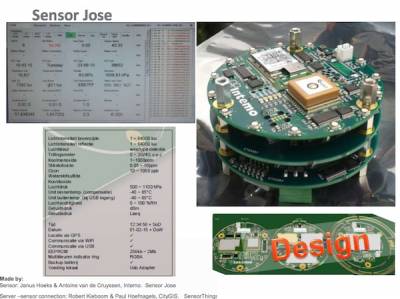
Our partner in the project Intemo , develops a sensor station, Josene nicknamed ‘Jose’, that measures not only AQ but also sound levels (Noise Pollution) and many other indicators, like light.
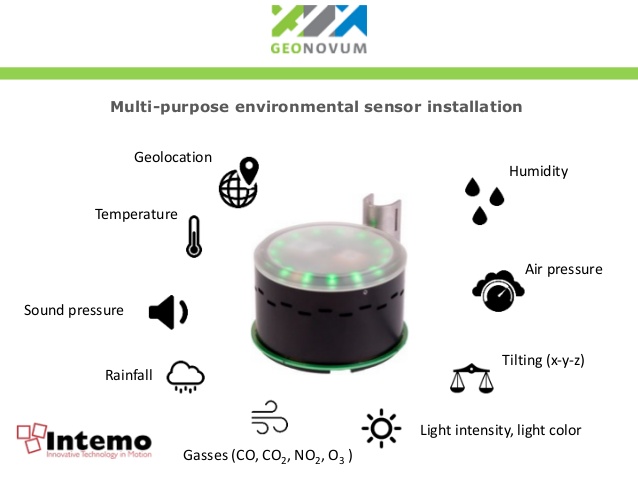
In the course of the project I was fortunate to follow a workshop at EU JRC for their amazing Open Hardware/Software product AirSensEUR . At the spot each of us assembled a complete ASE, connecting these to standard web services like SOS. The ASE Open Hardware approach also allows it to embed a multitude of sensor types and brands. The workshop had participants from the major national environmental agencies in Europe. In fact RIVM is now deploying and testing about 18 AirSensEURs . Coming year I have the task to deploy five ASEs within The Netherlands. Two of them are already humming at my desk for testing.
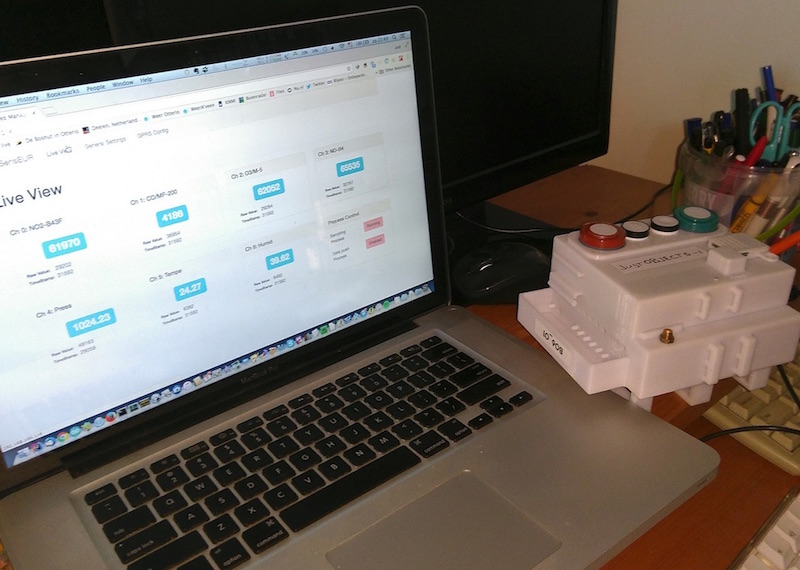
Describing AirSensEUR would require a full post by itself. Quoting: “AirSensEUR is an open framework focused on air quality monitoring using low cost sensors. The project started on 2014 from a group of passionate researchers and engineers. The framework is composed by a set of electronic boards, firmware, and several software applications.”

So currently (jan 2018) the SE Platform supports both the Josene/Jose and AirSensEUR sensor devices.
The Air Quality sensor data coming out of these devices still requires cleanup and Calibration. This is part of the data handling within the SE platform, subject of one of the upcoming Emits.
This post was meant to give you a taste of the challenges around using (cheap) sensors for Air Quality and introduce the two sensor devices (Josene, AirSensEUR) currently used/supported by the Smart Emission Platform. Many details are still to be uncovered. These will be subjects of upcoming Emits.
